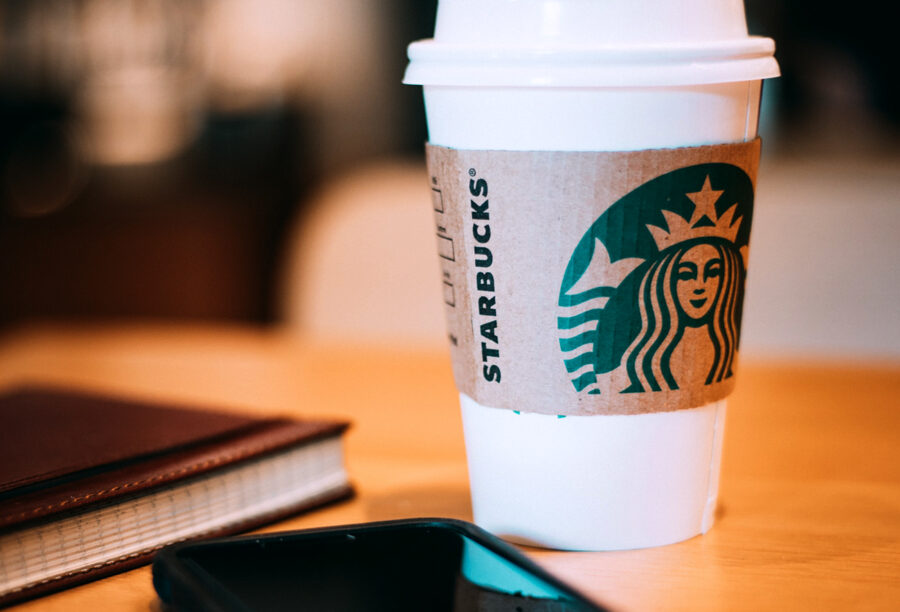The consumer backlash is brewing over Starbucks’ changes to its rewards program, which took effect Monday.
Blaming inflation, the Seattle-based chain has moved up the reward tiers for its most popular items. Now, coffee lovers now must spend more money to earn enough “stars” for a free latte or pastry.
“Starbucks just torpedoed their reward system,” customer L.C. Graf-Juarez tweeted in December after the company announced the changes. Dan Busler, another customer, tweeted in response, “I easily spend $50 a month at Starbucks…now there’s no reason to go there as often as I do.”
Similar consumer outrage has been directed in recent months at Dunkin’ and Best Buy, which also significantly altered their rewards programs to make loyalty perks harder to earn. Wharton marketing professor Raghuram Iyengar said the pushback is understandable, but so is the corporate decision to keep revenue high.
“Reward programs are one of many things companies are thinking about in terms of their own profitability, so I think it’s a tight balance,” he said to Wharton Business Daily on SiriusXM. “ On the one hand, you want to continue the rewards that you have set up to nudge consumers to buy. At the same time, the economy has been tough with the interest rates going up. They have to also start thinking about what else can be done.”
Iyengar co-authored a paper published last year that found loyalty programs are a great way for companies to get more customers, but they don’t always reap financial rewards. An analysis of 15 months of sales data for 24,000 customers enrolled in a loyalty program with a cosmetics retailer in Asia found that customers spent twice as much per month after joining. It was a boon for sales, yet the company was surprised by how much more it cost to serve those customers.
Starbucks may have been facing a similar conundrum in the latest revamp of its rewards program, which has been around since 2008. It grew steadily to 19 million customers in late 2020, then skyrocketed during the pandemic. At the end of last quarter, Starbucks counted 28.7 million rewards members.
“Reward programs are one of many things companies are thinking about in terms of their own profitability, so I think it’s a tight balance.” – Raghuram Iyengar
Iyengar referenced the marketing concept of heterogeneity – or understanding the needs and wants of individual customers. He said a segment of rewards customers will “roll with the punches” because the changes won’t stop their daily consumption habits. But newer customers just building their habits may see the changes as an incentive to switch to other retailers.
“Time will tell, in terms of which consumers end up sticking with these companies versus not,” Iyengar said. “I think in the larger scheme of things from a company’s perspective, they have to balance many different aspects of how to engage with consumers on the one hand, but of course looking at alternate sources of revenue on the other.”
A ‘Different Beast’
The professor noted that many retailers have revised their rewards programs to include more offerings. The idea is that customers who come in for an iced tea or a cappuccino at Dunkin’ or Starbucks, for example, will also want a doughnut or sandwich. It makes sense for companies to expand the breadth of programs in order to “maximize their share of wallets,” Iyengar said. Although the reason behind the change at Best Buy is still murky to him. The big box retailer is now offering reward points only to members who hold a Best Buy credit card.
“That’s a hard one to rationalize. Citibank is issuing the card, so I imagine Best Best would get a cut,” he said, adding that the company is likely benefitting from data collection enabled through the cards.
“Best Buy is a different kind of beast compared to, let’s say, buying coffee,” Iyengar said. “One has to think carefully about the frequency of purchase. Is having that loyalty card worth more than perhaps the deal they might be getting from Citibank?”
All the recent changes are just a reminder that businesses continue to walk a fine line between profitability and customer loyalty, Iyengar said. They are always thinking about what customers want – and what keeps them coming back.
“Anything that allows companies to understand what consumers are looking for in terms of more engagement with the company, in terms of becoming advocates for the brand — anything that helps them showcase their own loyalty to the brand but also spread the word – those are all changes which will be positive in the long run,” he said.



